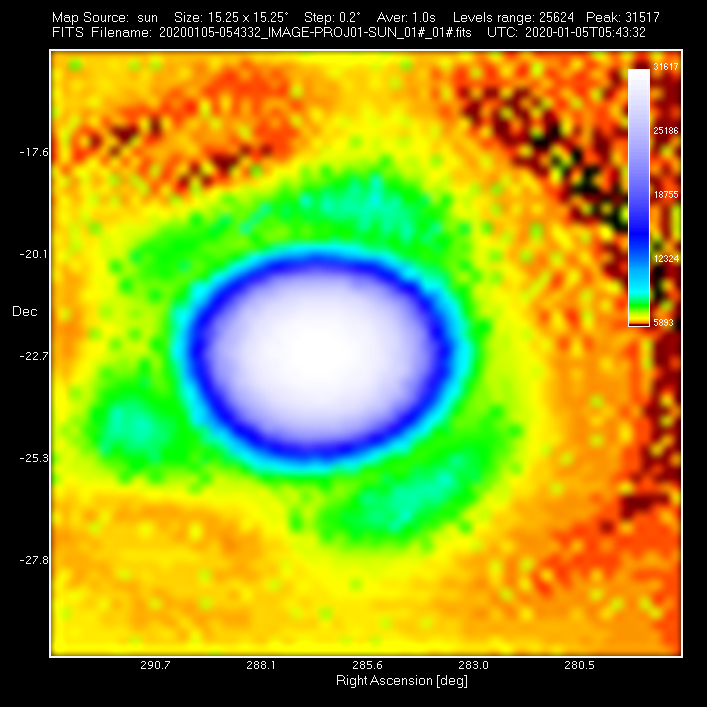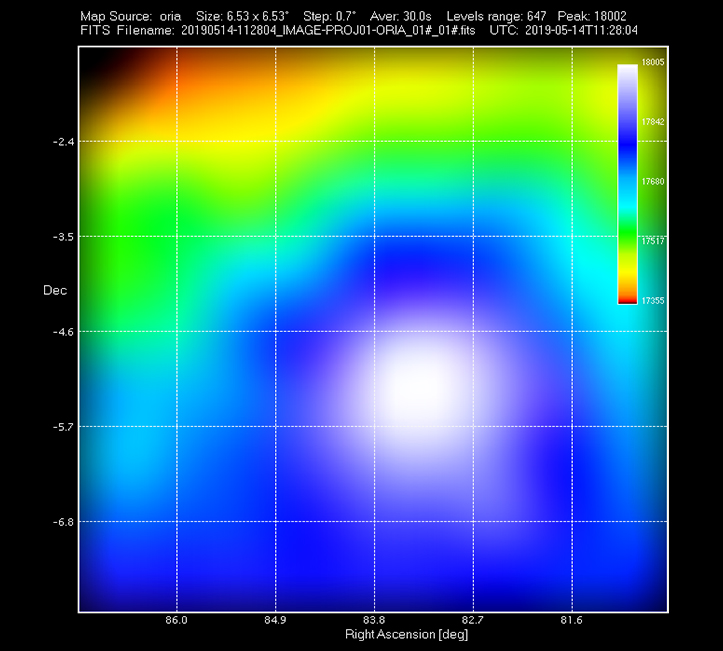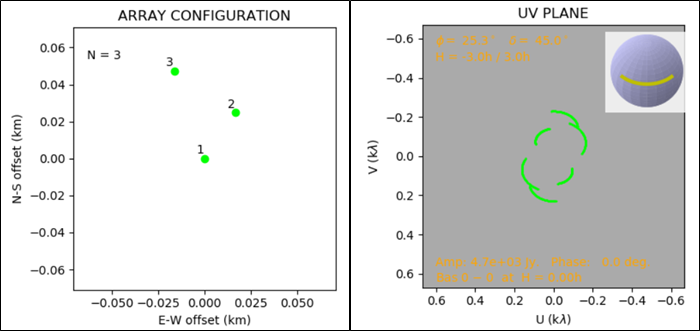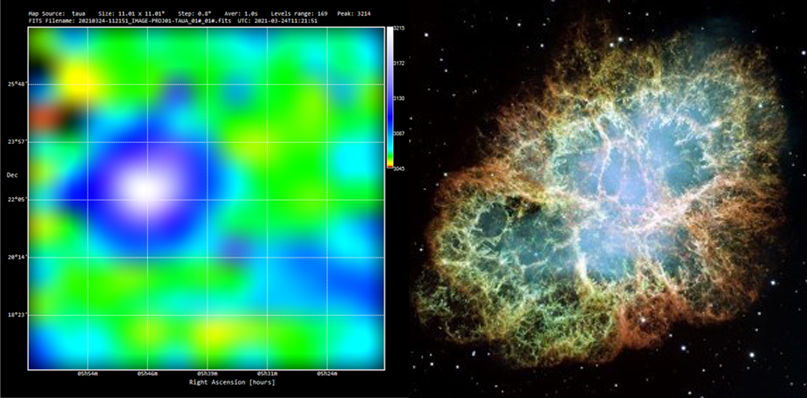Sharjah Radio Telescope
40-m Radio Interferometer
Overview
The Sharjah Academy for Astronomy, Space Sciences, and Technology (SAASST) aims to construct an interferometer designed to study the neutral Hydrogen line emission. The system is in United Arab Emirates, Sharjah. The exact geographical latitude and longitude coordinates of the radio telescope are 25° 17' 05.21" and 55° 27' 50.28", respectively.
The Interferometer project was first initiated in 2018 and completed on 2020 with the help of the Italian company PrimaLuceLab. The system was inaugurated by HH Sheikh Sultan Bin Muhammad Al Qasimi on 14th of Jan, 2020.

Our Objectives
Radio telescopes are characterized by their access to locations that other waves cannot reach in order to detect radio sources both inside and outside our galaxy.
Radio Bands
Study radio astronomy in the L-band.
Radio Interferometer
Construct a radio interferometer to simulate the resolution of a 40-m diameter single-dish antenna, operating at 1420 MHz.
Mapping
Map the distribution of neutral Hydrogen clouds within our Milky Way galaxy.
Radio Sources
Study galactic and extragalactic radio sources such as pulsars and radio galaxies.
Future
Train and prepare the next generation of radio astronomers to operate single radio dishes and interferometers.
Research
Contribute to understanding the workings of the universe by publishing our research in top journals of Astronomy.
Our System
Antenna
Mount
Sources
Software
| The WEB500-5 parabolic antenna is made of a fine aluminum mesh and provides a large collection area with a low overall weight. The dish is supported to maintain rigidity and fixed on top of the mount. The H-FEED feedhorn, positioned at the point of focus of the antenna, is designed to allow the reception of dual polarization with support for two professional Low Noise Amplifiers (LNA) at 1420 MHz frequency. |
 |
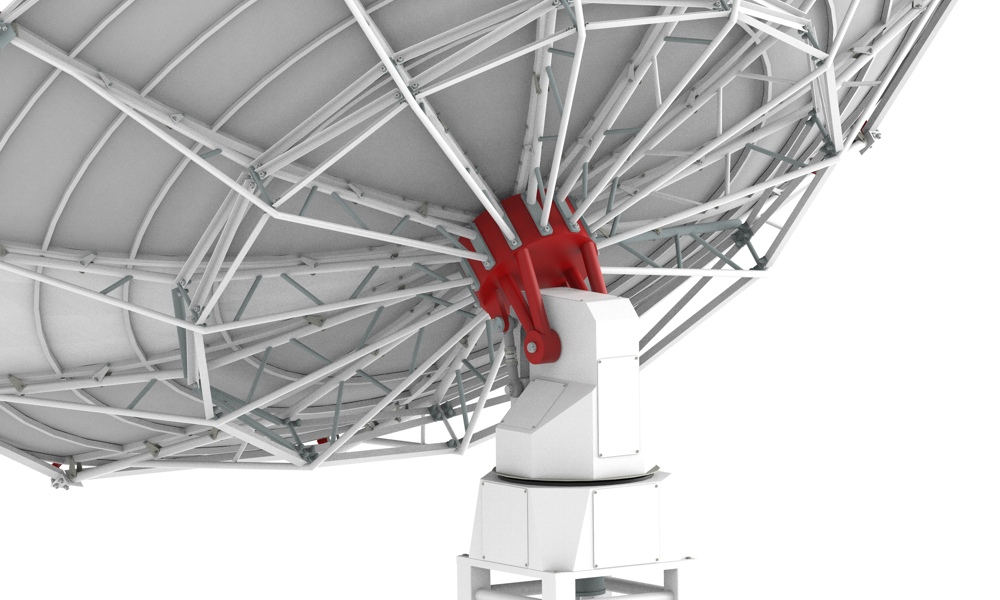 |
Radio astronomy is weather independent, which allows observations during day or night, clear or cloudy sky. The new WP-400 computerized weatherproof mount enables the astronomer to install the telescope outside without a dome. It also includes a security system that “parks” the telescope when winds exceed 50 Km/h to prevent any damage to the telescope.. |
| The H142-One receiver is a superheterodyne type radiometer/spectrometer that operates at 1420 MHz, with a 50 MHz bandwidth and 14-bit analog to digital converter. The receiver contains high gain and low electronic noise components which enables the telescope to record several radio sources in the Universe, with a theoretical flow of at least 5 Jy. | 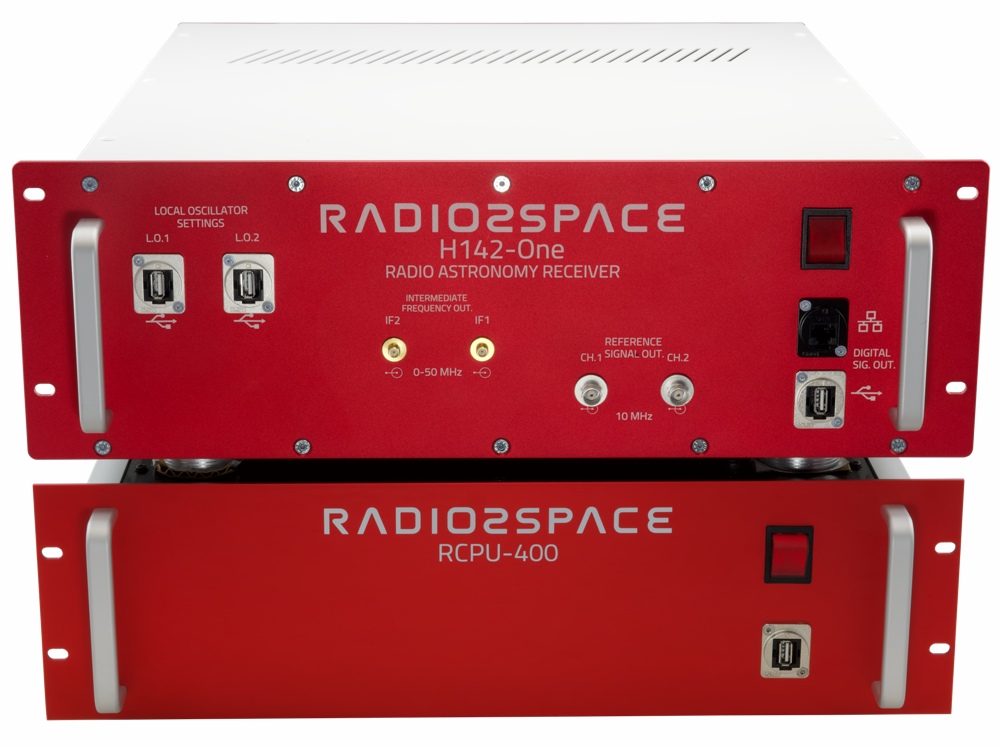 |
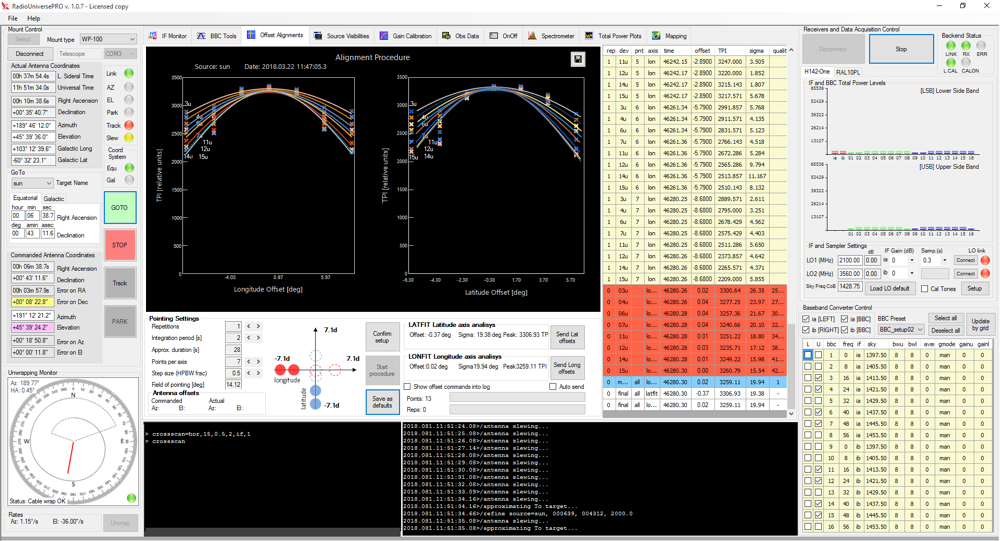 |
The telescope is equipped with the RadioUniversePRO software that displays all the parameters of the telescope, operates and records the necessary data. The software contains a catalog for different types of sources that you can observe. It filters out any radio interference, creates radio maps, synchronizes the telescope with the source and visualizes and records the variation of the radio signal flux over time. |
Reach The EdgeOf The Universe
Many astronomical objects are not only observable in visible light but also emit radiation at radio wavelengths. Besides observing energetic objects such as pulsars and quasars, radio telescopes are able to "image" most astronomical objects such as galaxies, nebulae, black hols, and even radio emissions from planets.
publications
Project Phases
Phase 1
Pre-Installation
Area was selected to allow easy access, easy remote control of the telescope, and minimum radio interference at 1420 MHz.
Phase 2
Installation of the first 5-m Radio Dish
The first-ever SPIDER 500A in the world was successfully set up within 3 days on the 25th of April 2019. The telescope saw the first light, observing Orion A, on 14th of May 2019.
Phase 3
40-m Radio Interferometer
The second and third SPIDER 500A telescopes are scheduled to arrive and installed at the end of October. The three telescopes together will operate at an angular resolution of 3 degrees with that of a 40-m radio telescope.

Ongoing Projects
Giant Radio Sources Project Description
The GRS project presents 1.4 GHz observations of well-known Giant Radio Galaxies. The main objective of these observations is to understand the correlation between radio core prominence and total radio luminosity of the GRS, which in turn will help build a better model to understand their evolution.
Mapping the Plane of the Milky Way Project Description
Creating a panorama of the milky way using a technique where we map small parts of the plane to construct a bigger one.
Lunar Project Description
Observe the Hydrogen Line radiation reflected off the moon’s surface from the sun as a radiation source and compare the subsequent data with the generalized solar radiation reflection off the lunar surface percentage range (3% to 12% of received sun radiation) with respect to the phase of the moon during that observation.
Our Valuable Team






